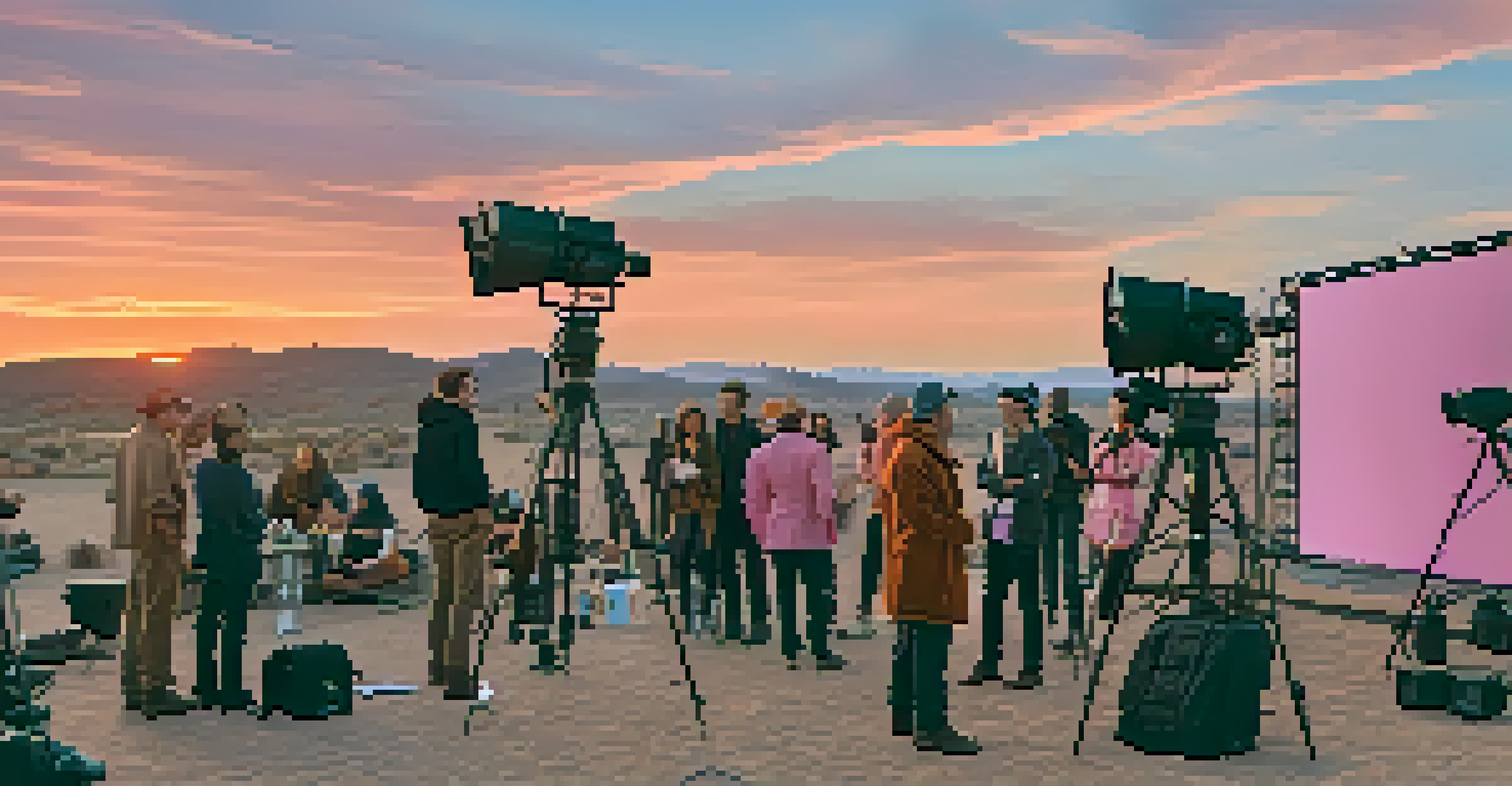Shooting Schedule: Timing is Everything in Film Production

Understanding the Importance of a Shooting Schedule
A shooting schedule is the backbone of any film production. It outlines when and where each scene will be filmed, ensuring that everyone involved is on the same page. Without a well-structured schedule, chaos can ensue, leading to delays and increased costs.
Failing to plan is planning to fail.
Imagine trying to cook a complicated meal without a recipe; you might forget key ingredients or mix things up. Similarly, a shooting schedule keeps the production team organized, allowing them to allocate resources effectively and manage time wisely.
In essence, the shooting schedule is not just a timeline; it's a roadmap that guides the entire crew from pre-production to the final cut. Understanding its significance is the first step to successful filmmaking.
The Elements of a Comprehensive Shooting Schedule
A comprehensive shooting schedule includes various elements, such as scene descriptions, locations, cast availability, and equipment needs. This level of detail helps ensure that nothing is overlooked during the production process. For example, if a certain location is only available on specific days, that must be reflected in the schedule.

Additionally, it's essential to account for factors like weather conditions and daylight hours, especially for outdoor shoots. Filmmakers often rely on historical weather data to predict what conditions might affect their shooting days.
Shooting Schedule: A Production Backbone
A shooting schedule is essential for organizing film production, ensuring that everyone is aligned and resources are allocated efficiently.
By incorporating all these elements, a shooting schedule becomes a powerful tool that enhances efficiency and minimizes risks during filming.
Balancing Time and Budget in Film Production
One of the most crucial aspects of a shooting schedule is its role in balancing time and budget. A well-planned schedule helps filmmakers avoid costly overruns by setting clear timelines for each phase of production. For instance, if a scene takes longer to shoot than anticipated, it can push back subsequent scenes and inflate overall costs.
The secret of success is to be ready when your opportunity comes.
To manage this balance effectively, producers often implement buffer times between scenes to account for any unexpected delays. This strategy not only keeps the production on track but also alleviates some of the pressure on the cast and crew.
Ultimately, a shooting schedule that respects both time and budget constraints can lead to a more efficient production process, allowing filmmakers to focus on creativity rather than logistics.
Flexibility: Adapting the Schedule as Needed
While a shooting schedule is essential, flexibility is just as crucial. Unexpected challenges, such as weather changes or actor availability, can disrupt even the best-laid plans. Therefore, it's important for filmmakers to remain adaptable and willing to make adjustments when needed.
For example, if rain threatens an outdoor shoot, having a backup plan to film indoors can save the day. This ability to pivot not only minimizes stress but also ensures that production continues smoothly.
Flexibility is Key in Filmmaking
Filmmakers must remain adaptable to unexpected challenges, making necessary adjustments to keep production on track.
By embracing flexibility, filmmakers can navigate the unpredictable nature of film production while still adhering to their overall vision.
Collaboration: The Key to Effective Scheduling
Creating an effective shooting schedule requires collaboration among various departments. Directors, producers, and department heads must communicate openly to align their schedules and resources. This teamwork ensures that everyone is on the same page and that the production runs smoothly.
For instance, the cinematographer may need to coordinate with the art department to confirm set availability. If everyone communicates effectively, potential conflicts can be resolved before they escalate.
In essence, collaboration fosters a sense of unity among the crew, making the shooting schedule a collective effort rather than a solo endeavor.
The Role of Technology in Scheduling
In today's digital age, technology plays a significant role in creating and managing shooting schedules. Various software and apps are available that allow filmmakers to input details, share schedules, and make updates in real-time. This tech-savvy approach streamlines communication and keeps everyone informed.
For example, cloud-based platforms enable team members to access the shooting schedule from anywhere, ensuring that last-minute changes are communicated instantly. This level of accessibility can significantly reduce misunderstandings and errors.
Collaboration Enhances Scheduling Success
Effective scheduling relies on collaboration among departments, fostering communication and unity to avoid conflicts.
By leveraging technology, filmmakers can enhance the efficiency of their scheduling processes, ultimately leading to smoother productions.
Learning from Past Productions
One of the best ways to improve shooting schedules is by learning from past productions. Analyzing what worked and what didn't can provide valuable insights for future projects. Many filmmakers keep detailed records of their shooting schedules to reflect on successes and challenges.
For instance, if a certain scene consistently took longer to shoot than anticipated, that information can help adjust future schedules accordingly. This practice not only helps in better planning but also enhances overall production efficiency.

By drawing lessons from the past, filmmakers can refine their approach to scheduling, ensuring that each new project benefits from their accumulated knowledge.